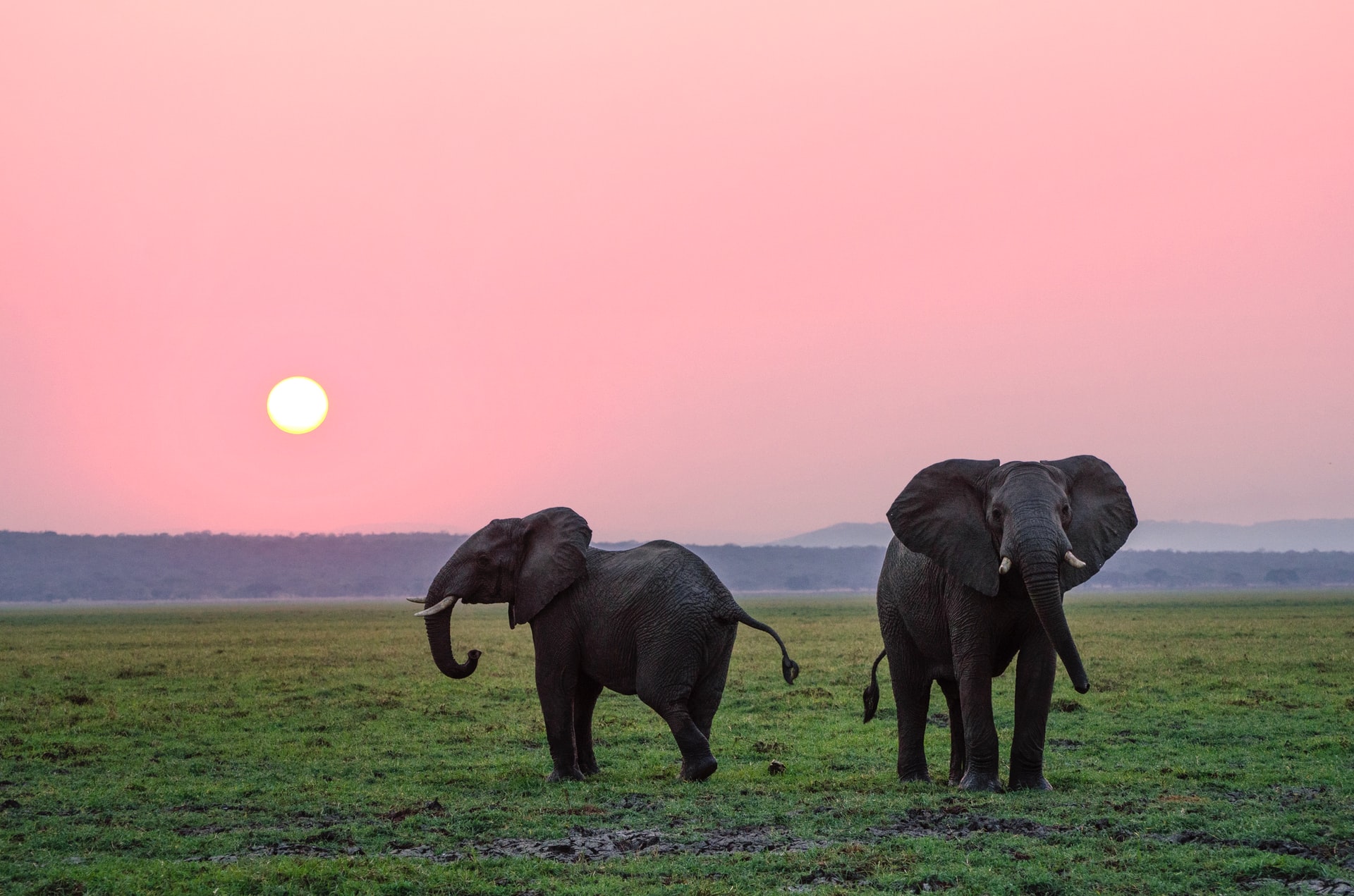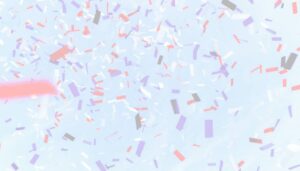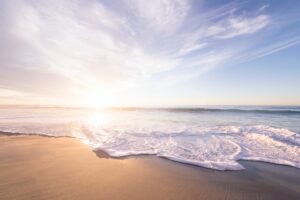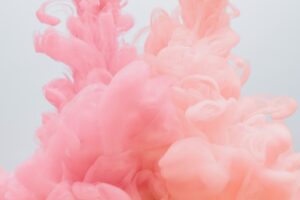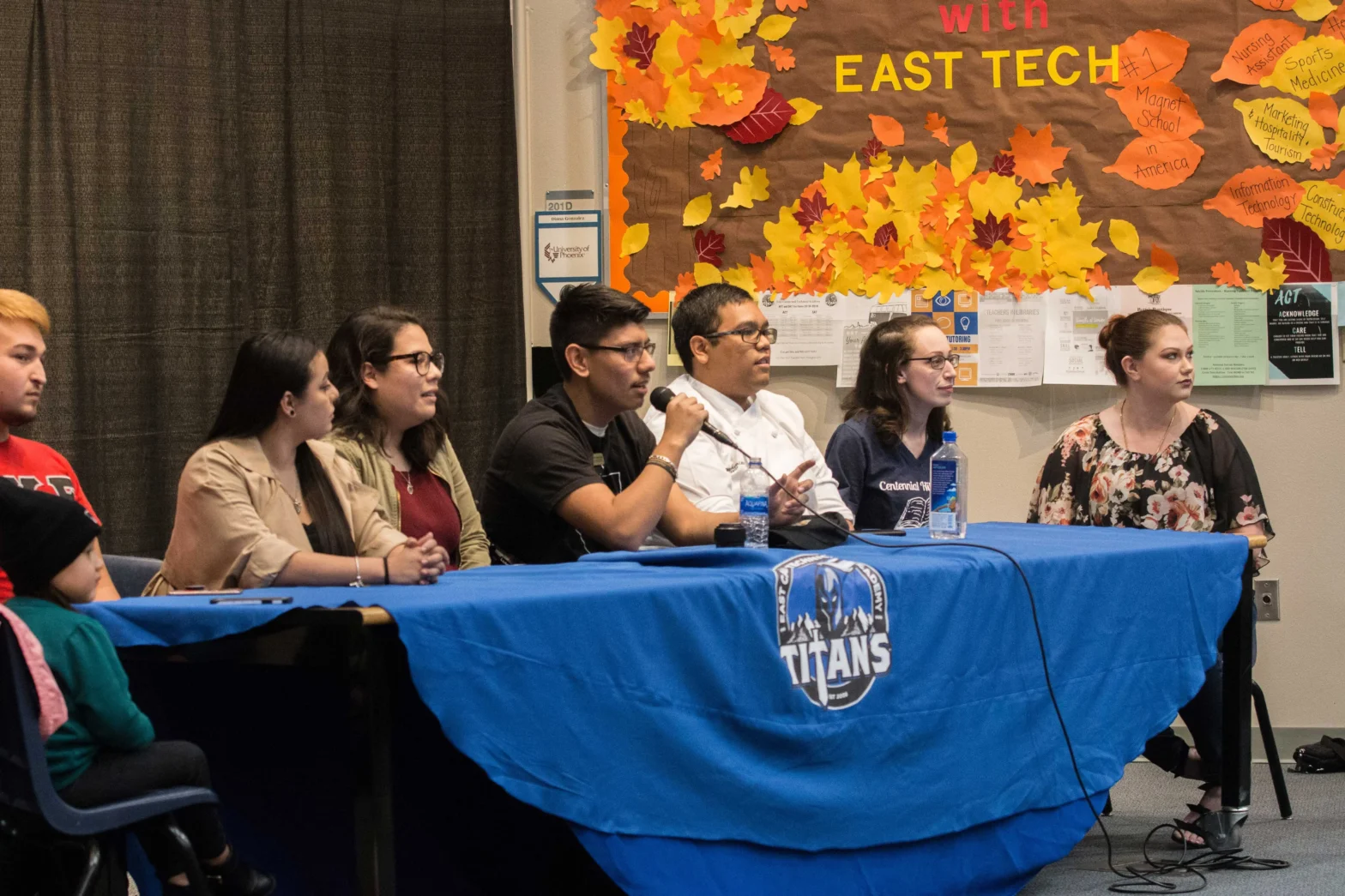“During my first semester of college I was heading to my biology class when I passed by a poster that brandished a pair of lions and offered a chance to see and work with wildlife for a veterinary field study in South Africa.”
Three years and two ten-hour flights later I arrived at O.R. Tambo International Airport in Johannesburg, SA in July on a mild winter day (I was comfortable enough without a jacket).
WEEK 1
Our first few days went without event. We stayed at a comfortable bed and breakfast and explored the neighborhoods. On the fourth day we drove to the Jabulani Game Lodge and Wedding Venue and walked the trails. Later that evening we cooked ourselves dinner and had a small celebration for the start of our trip (and my 21st birthday).

The following day we visited the Dell Cheetah Centre, an organization that cares for cheetahs and other wildlife. There we were able to interact with the a young male cheetah named Raphael. The handler demonstrated his amazing running capabilities, explaining how their build and specific features aided cheetahs in the wild. After leaving Raphael we met other animals including servals, a caracal, lions, and several types of antelope (there’s over 26 different antelope species!).
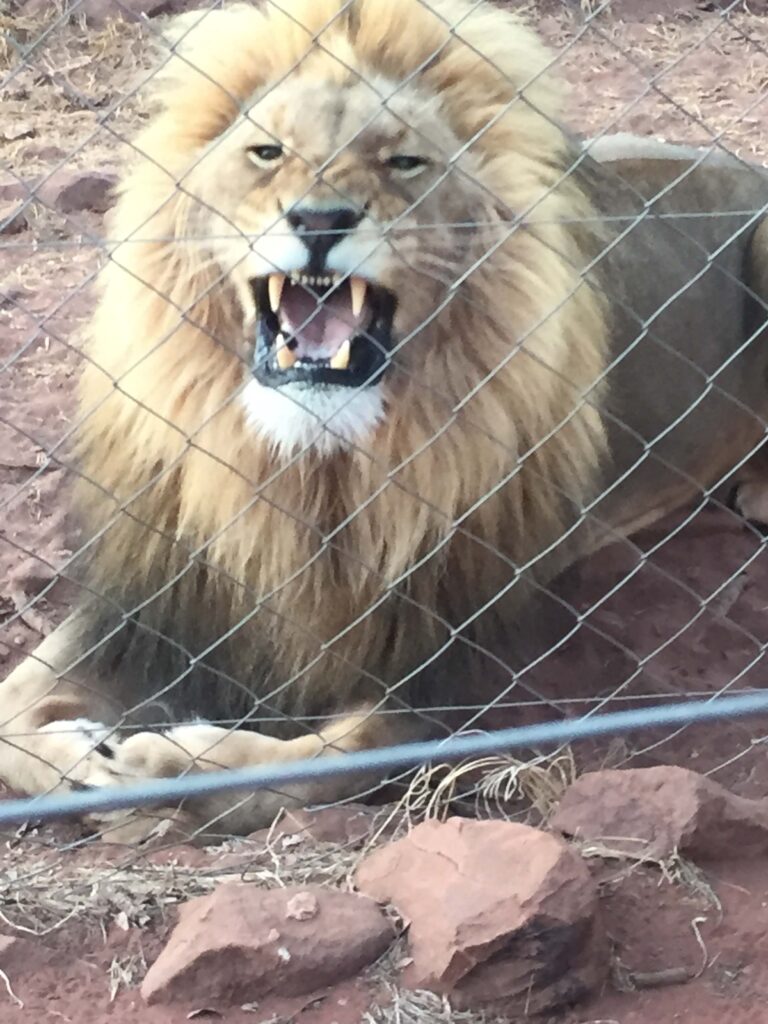
After we left the Centre we returned to Jabulani, going on a game drive and seeing lions, cheetahs, giraffes, zebras, and many other animals. We stopped at an enclosure and left the vehicle. Before us were three 3-month old lion cubs in the middle of dinner who were not happy to see us. We sat in their enclosure for a short while as the owner of the game lodge spoke about his animals and the programs they’re apart of. The lion cubs looked anxiously on, avoiding us as much as possible. We left briefly to visit three more lion cubs, 5-month olds who were more curious about us but still refused to get too close. We returned to the younger cubs who we then took pictures with, much to their chagrin. Once we said our goodbye to the cubs, we continued our drive until we returned to our lodges and prepped for the night.
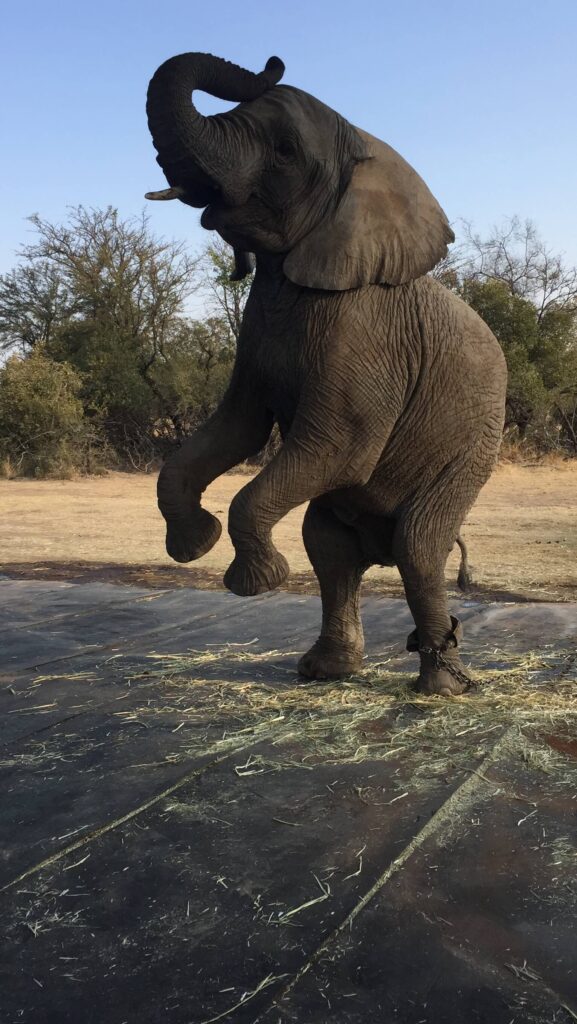
WEEK 2
The following week we made our way to Adventures with Elephants before proceeding to our campsite in Bela-Bela. The drive lasted three hours and allotted plenty of time for sightseeing, spotting baboons and vervet monkeys, giraffes and numerous antelope, and even some donkeys who were lounging in the road. We were split into two groups upon arrival at the reserve, each group taking turns in riding the elephants along a trail around the park. Following the ride the guides spoke to us about elephants and demonstrated their incredible intelligence by having them follow commands and even play games with us. We each even received a kiss from one of the elephants!
It wasn’t unusual for animals to be unafraid of humans in South Africa. On more than one occasion during our stay in Bela-Bela (and other campsites) we were visited by Njala, a type of antelope, who enjoyed nosing around while we were cooking.
The following day was free for us to do as we like. We all decided to go zip-lining before returning to our campsite and donning our bathing suites and sitting by the pool enjoying the warm winter sun. By evening we were taken to the lions that were on the property and watched the lions feed on a carcass. Though the view wasn’t great, the lions were nonetheless enjoyable to watch. The following day we packed up and went on a brief game drive, though nothing of significance appeared, and then we headed to our next campsite: Shosholoza.
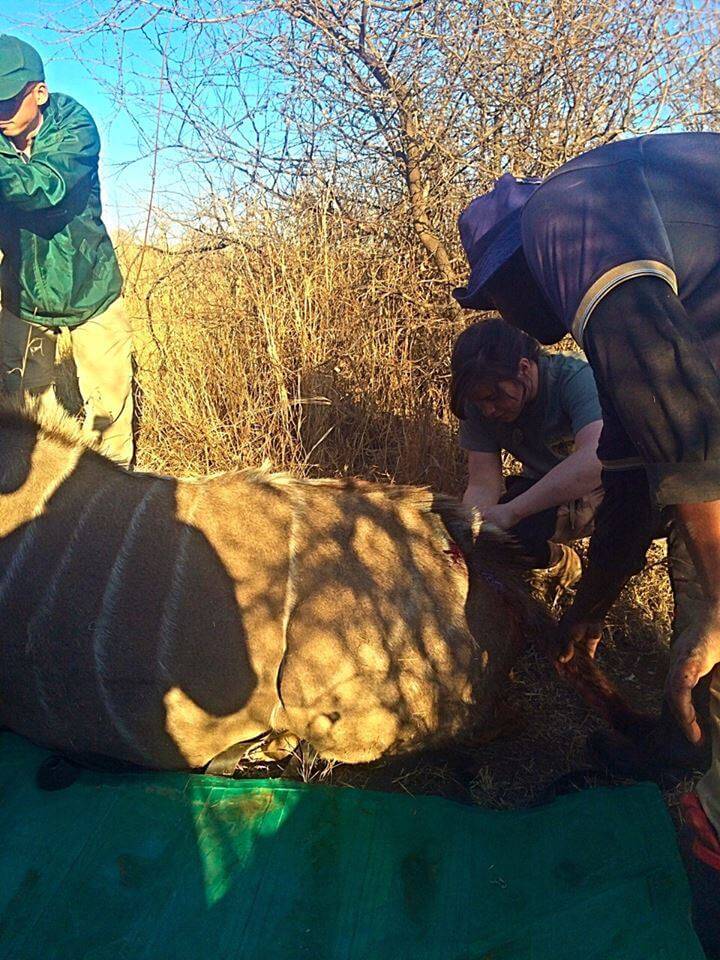
By this time we were in our second week of the trip and now we truly were going to get our hands dirty. We would be working with veterinarians this week and I was overflowing with excitement. That didn’t last too long, however, when the vet we were supposed to meet up with early in the morning informed us that he wouldn’t be there until after noon (the hurry-up-and-wait game is not fun at all). But he finally arrived, and we headed off to the game reserve where we’d be working with Cape Buffalo.
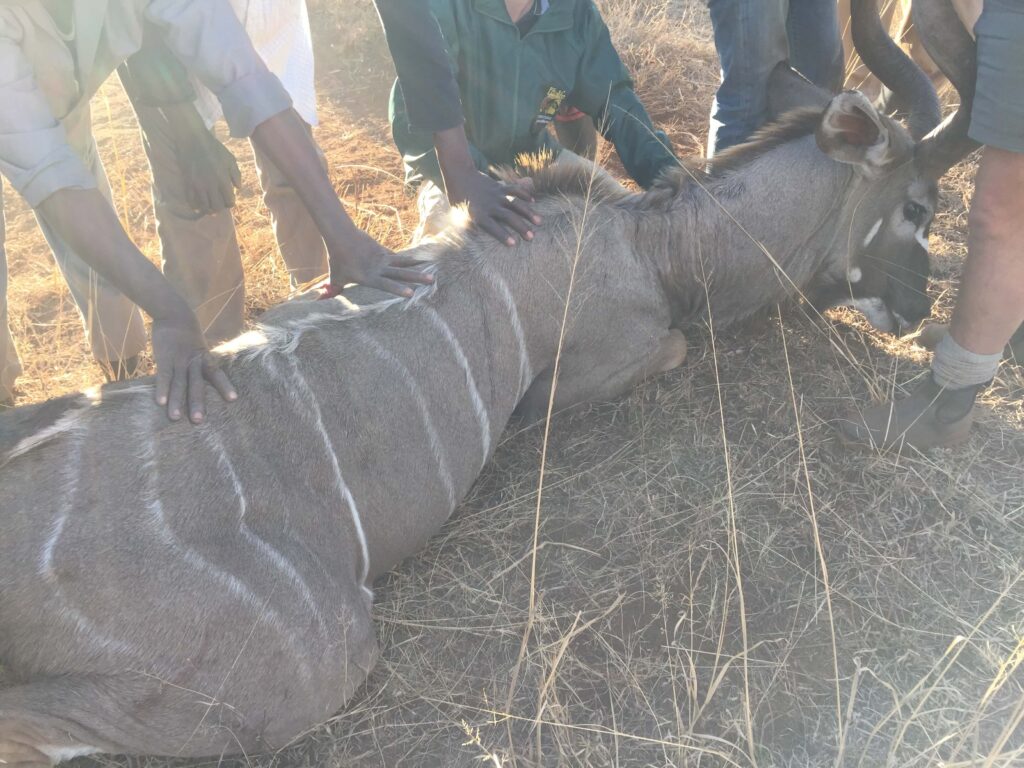
On the farm, the animals were tranquilized and we worked quickly to bring the ruminants into sternal position. We then tested them for both bovine and avian TB and applied tick repellant to their coats. The following day we began a precarious game capture where the antelope were darted from a helicopter and we chased them down in trucks (getting a good grip and maintaining it when you’re going over 100 mph is not easy). Once the animals were down we repeated the process from the previous day, getting them into sternal position and applying tick repellant and vitamin injections; they were then loaded into the bed of the trucks and raced back to where they would be released. Once the capture was done, we returned to the cape buffalo where we needed to capture and relocate them to a different farm. This process was far more dangerous because these animals were not in a contained environment, and it was much like we were working with the antelope. The babies were easy to work with, although we could not dart them so trying to restrain them was the worst of it.
After all the buffalo had been captured, we brought them all to the farm where they would be relocated and we watched on as they were set free into their new residence. After a hard day’s work we were able to relax and enjoy ourselves for the rest of the night.
The following day we went to a squatter camp with Dr. Renee van Rheede va Oudtshoom who worked with Vets for Change. At the camp we asked the people if they had any pets. If they did, we would give them rabies vaccines, frontline, and dewormer and note any animals that needed to receive special services (such as being spayed or neutered). While we worked with the animals the vet interacted with the children who were curious about us, showing them a game she created to help them learn maths. The kids were excited and enjoyed the opportunity at a new game. We finished shortly after noon and returned to camp. The following day we received a lecture on the medicines used in game capture and what their purposes are, followed by practice using dart guns. Why? Because only a few days later we took to the skies in a helicopter and took aim at a poor giraffe who’s rump was probably sore the next day but at least the tick repellant-filled paintballs kept it tick-free.
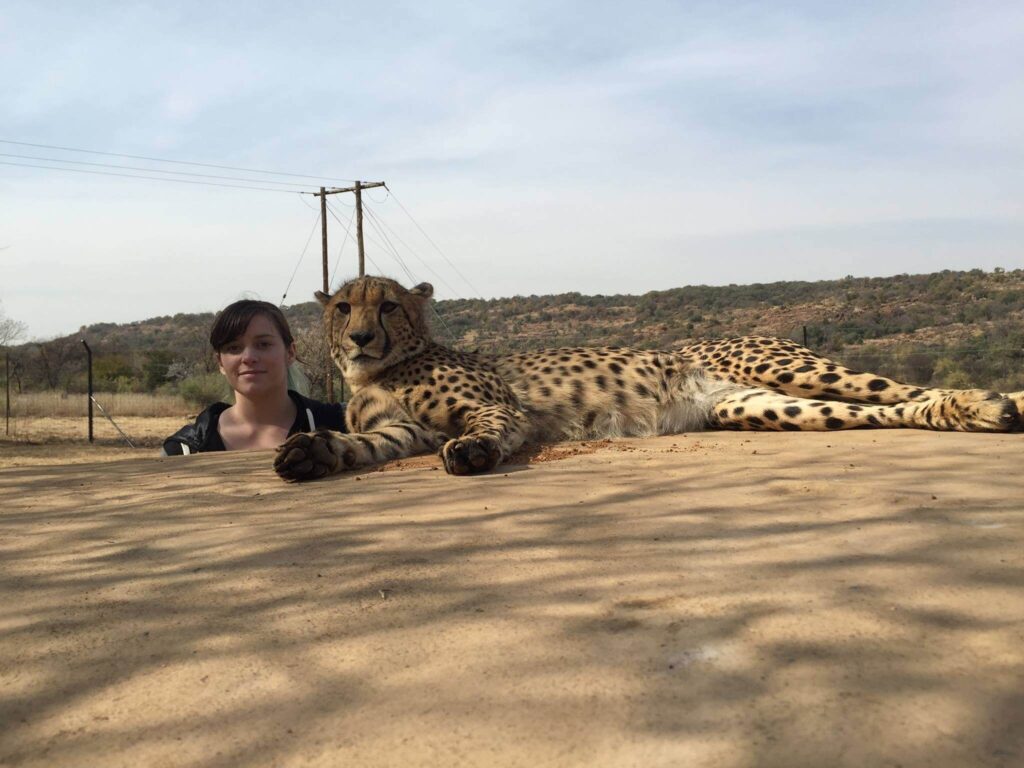
FINAL GOODBYE
We left for Swadini the day after our fly in the sky, saying our final goodbyes to the animals we’d pass on our drive out of the camp (like the ostriches and emus who raced us every time we drove by, the sable bulls worth $500,000, and the warthogs who were able to wiggle through the fences of the different enclosures). Once we arrived we set up camp and prepared for the night. The following day we headed out early to Moholoholo, a reserve that rescued injured animals and rehabilitated them, as well as keeping numerous endangered species on the premises. There, we met the famous honey badger known as Houdini as well as his child, aptly named Panda. We also met an eight day old antelope from the smallest species, as well as several baby sable (the really expensive antelope) and a baby eland (the largest of the antelope species). We also interacted with many birds of prey, and saw just how incredible a leopard’s ability to camouflage was. There were so many types of animals we met that day I lost count and couldn’t begin to name all the species!
Once we finished at Moholoholo we traveled a short ways away to the Khamai Reptile Park. There, we met snakes, lizards, crocodiles, and even a tarantula. We received a lecture on the different types of reptiles and how they’re classified before we were allowed to explore their many inhabitants. We even watched green mambas feed on (frozen) mice to see the process of prey consumption.
The next day was a free day where we explored a hiking trail by the river before heading out to a waterfall for a dip in extremely cold water. It was winter after all. We had pizza for dinner, which was a much needed relief from camp food. The next day we set out for Kruger National Park and our final days on our EcoLife Expeditions field study.
We had one final lecture at Kruger, where we learned about how the animals are maintained and population controlled, as well as how they are trying to oppose poachers who come after their rhinos and elephants. For a short while we watched by the riverbed, looking on at the hippos and warthogs coming in and out of the scenery. Our last days at Kruger were spent on game drives or walks, trying to see how many of the Big Five we could spot (lions, elephants, rhinos, leopards, and cape buffalo). During a walk we came incredibly close to a male rhino, dangerously so even. Later that evening we disturbed a leopard napping by the road during a night drive. And as we went to sleep we heard the roars of lions in the distance and woke to vervet monkeys and elephants by our camp.

The trip was all in all an incredible opportunity that I am glad I was a part of. I have always had a passion to work with animals and had an interest in wildlife, so this trip allowed me to explore that interest in depth. I had many interactions with people and animals that were one of a kind and something I could never forget. I learned about the importance of conservation and preservation of parks and animal populations right where it mattered most. Without a doubt those three weeks were well worth the years it took to save, because it was an experience that will benefit me for the rest of my life.

Share Alumni Legend on:
